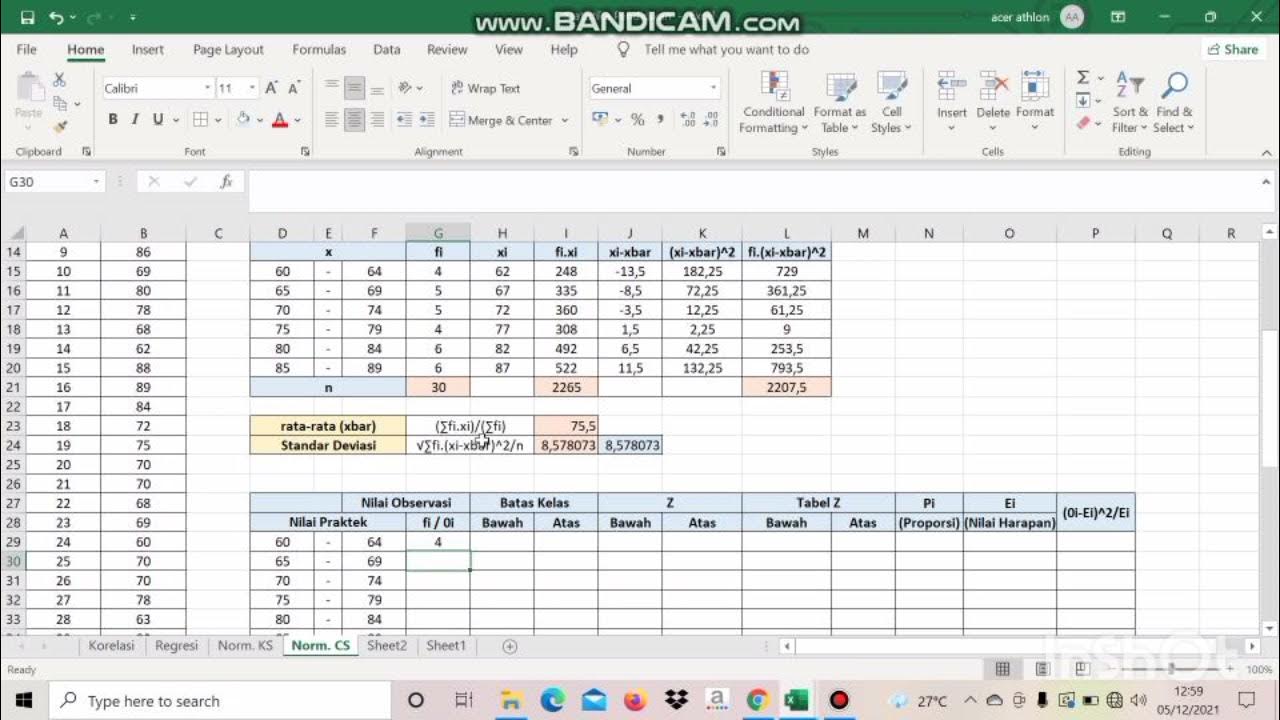Uji Hipotesis
Summary
TLDRThis video introduces the concept of hypothesis testing, explaining how to determine whether a hypothesis is accepted or rejected. It covers key points such as the role of hypotheses in research, including descriptive, correlational, and experimental studies. The video discusses the difference between alternative and null hypotheses, two-tailed vs. one-tailed hypotheses, and statistical testing. It emphasizes the importance of hypothesis testing in scientific research, outlining how to interpret P-values and significance levels. The presenter also touches on common errors in hypothesis testing, such as Type 1 and Type 2 errors.
Takeaways
- 😀 A hypothesis is a temporary answer to a research question based on previous theories and studies.
- 😀 A hypothesis must be testable, meaning it should be possible to collect data and analyze it to accept or reject it.
- 😀 The null hypothesis (H₀) assumes no effect or relationship, while the alternative hypothesis (H₁) suggests there is a relationship or difference.
- 😀 Hypotheses can be two-tailed (testing for any direction of effect) or one-tailed (testing for a specific direction of effect).
- 😀 In statistical testing, the p-value indicates the significance of results. If the p-value is less than 0.05, the null hypothesis is typically rejected.
- 😀 Type 1 error occurs when the null hypothesis is incorrectly rejected, while Type 2 error happens when it is incorrectly accepted.
- 😀 Error types are controlled to minimize mistakes in hypothesis testing, with Type 1 error typically set to 5% (alpha level 0.05).
- 😀 Hypothesis testing is commonly used in research, such as correlation studies, comparative studies, and experimental research.
- 😀 In hypothesis testing, results are reported with symbols (e.g., one star * for p < 0.05) to indicate significance levels.
- 😀 Statistically significant results show a relationship or difference between variables, which is crucial for making valid research conclusions.
- 😀 In social sciences, a 95% confidence level (p < 0.05) is commonly used, meaning there’s a 5% chance the result is due to random error.
Q & A
What is the definition of a hypothesis in research?
-A hypothesis is a provisional answer to a research question, based on theoretical frameworks or prior literature. It represents a potential relationship or difference between variables that is tested through research.
What are the different types of research where hypotheses are used?
-Hypotheses are used in different types of research, including descriptive research (often no hypothesis), correlational research (exploring relationships between variables), comparative research (examining differences between groups), and experimental research (studying causal relationships between variables).
What are the essential characteristics of a good hypothesis?
-A good hypothesis should be stated as a declarative sentence, not a question. It should be testable and based on existing theories or literature. Additionally, it should outline a relationship or difference between at least two variables.
What is the difference between the null hypothesis and the alternative hypothesis?
-The null hypothesis (H₀) suggests that there is no relationship or difference between variables. In contrast, the alternative hypothesis (H₁) asserts that there is a significant relationship or difference between the variables.
What is the purpose of a two-tailed hypothesis?
-A two-tailed hypothesis indicates that a relationship or difference exists between variables, but it does not specify the direction of the effect. For example, it suggests that there is a correlation between two variables but does not specify whether it is positive or negative.
How does a one-tailed hypothesis differ from a two-tailed hypothesis?
-A one-tailed hypothesis specifies the direction of the relationship between variables. For instance, it may state that one group has higher aggression levels than another, whereas a two-tailed hypothesis only indicates that a difference exists without specifying the direction.
What are Type I and Type II errors in hypothesis testing?
-A Type I error (alpha error) occurs when the null hypothesis is rejected incorrectly, suggesting a relationship or effect when there is none. A Type II error (beta error) occurs when the null hypothesis is incorrectly accepted, suggesting no relationship or effect when there is one.
What is the significance level (alpha) in hypothesis testing?
-The significance level, often denoted as alpha (α), is the threshold for rejecting the null hypothesis. A common significance level is 0.05, meaning that there is a 5% chance of making a Type I error if the null hypothesis is incorrectly rejected.
What does the p-value indicate in hypothesis testing?
-The p-value indicates the probability that the observed results occurred by chance. A p-value less than 0.05 suggests that the null hypothesis can be rejected, meaning the results are statistically significant.
How do researchers decide whether to accept or reject a hypothesis based on p-values?
-Researchers typically reject the null hypothesis if the p-value is less than the significance level (commonly 0.05). If the p-value is greater than or equal to 0.05, the null hypothesis is not rejected. A smaller p-value indicates stronger evidence against the null hypothesis.
Outlines

This section is available to paid users only. Please upgrade to access this part.
Upgrade NowMindmap

This section is available to paid users only. Please upgrade to access this part.
Upgrade NowKeywords

This section is available to paid users only. Please upgrade to access this part.
Upgrade NowHighlights

This section is available to paid users only. Please upgrade to access this part.
Upgrade NowTranscripts

This section is available to paid users only. Please upgrade to access this part.
Upgrade NowBrowse More Related Video

Unit-5 | Maths-4 Most Important Questions with Explanation | Specially for Back Students | Aktu Exam

An Introduction to Hypothesis Testing

p-Wert in der Statistik einfach erklärt | Hypothesen-Test | Beispiel | wirtconomy

pengujian hipotesis rata-rata dan proporsi suatu populasi

Inferência Aula 32 - Teste de Hipótese para Média com Variância Desconhecida

#4 Uji Normalitas Chi Square dengan Excel - Statistika Pendidikan
5.0 / 5 (0 votes)